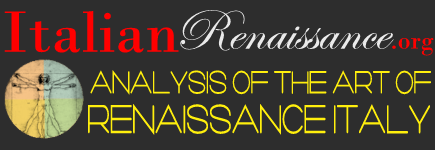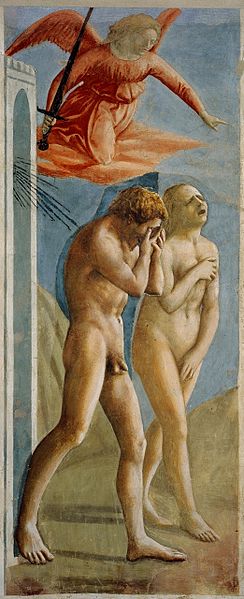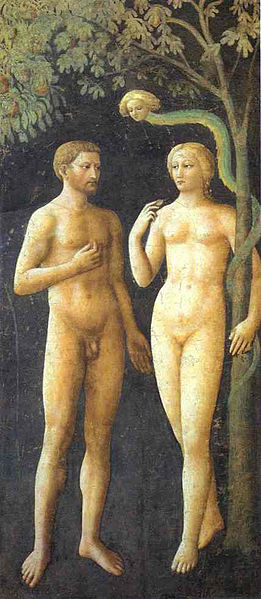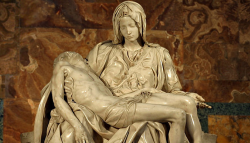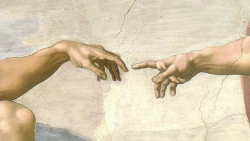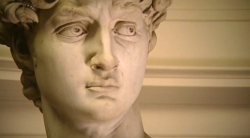Masaccio’s fresco depicting Adam and Eve being expelled from the Garden of Eden by an angel is located in the Brancacci Chapel inside the church of Santa Maria del Carmine in Florence. The fresco is part of a larger cycle he painted for part of the chapel, while another painter, Masolino, worked on another fresco on the opposite wall of the chapel.
The Expulsion shows the scene from the book of Genesis after the Fall; after Adam and Eve have eaten from the fruit which God has forbidden them to eat, they are cast out of the Garden of Eden and into the world where they are forced to labor and suffer the consequences of their sin. It is a scene of remarkable emotion, as Eve cries out and Adam cannot bear to show his face. The Expulsion is next to another of Masaccio’s paintings in the chapel called the Tribute Money, in which St. Peter plays a prominent role. By placing these two scenes next to one another, Masaccio (or the theologian responsible for designing the program) seems to draw a connection between the Fall of Man and subsequent salvation via the Catholic Church, symbolized by St. Peter.

Brancacci Chapel, Santa Maria del Carmine, Florence. Masaccio’s fresco of Adam and Eve is on the upper left wall, visible in this photo.
We see that this fresco carries over some of the same features of the Tribute Money fresco, such as the presence of an off-picture light source which causes shadows to be cast to the left. Interestingly, the pictorial light source comes from the same direction that the actual light source in the chapel comes from (see photo). Masaccio has therefore planned out his painted figures to respond to the physical surroundings of the painting.
Masaccio has also made strides in the structuring of the bodies of the figures here. They are quite accurate as they show Adam’s muscularity and the bending of his torso. Eve, who covers herself in her shame, does so in a way which resembles classical statues of the Venus Pudica, which suggests that Masaccio was looking at ancient works for inspiration before or during his work on this fresco.
One of the best ways of understanding Masaccio’s contributions to Renaissance painting is by comparing the Expulsion to Masolino’s fresco on the opposite wall in the chapel showing the temptation of Adam and Eve. Masolino painted two expressionless figures who appear to be suspended in air against a dark-colored background. These figures appear static and more in keeping with medieval figural depictions. Masaccio, however, has given Adam and Eve an incredible amount of expression as they grieve over the consequences of their sins. They appear to be firmly planted on the ground and they are placed against a simple landscape setting. Masolino’s fresco may have been in keeping with traditional expectations, but Masaccio’s was one which would push Renaissance artists forward.
